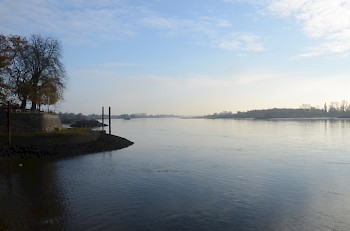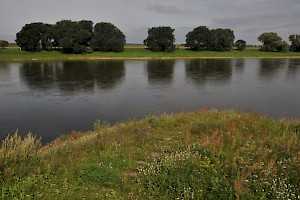Albis (Elbe)
Q32750595Albis: river in Germania, modern Elbe.

With a length of almost 1,100 kilometers (1,094 to be precise), the river Elbe is one of the longest rivers in Europe. It source is in Bohemia (the Czech Republic) and it flows through the eastern part of Germany to the North Sea. The rocky isle of Helgoland, where the ancients found amber, is opposite the Elbe's estuary.
The ancient authors were aware that the river had its source in Bohemia, but were unsure about the exact location. Writing at the beginning of the second century, Tacitus tells that the river "rises in the territories of the Hermondurians";note the geographer Ptolemy thinks about the Sudeten Mountains;note; and Cassius Dio, benefiting from the exploration during the Marcomannian campaigns of Marcus Aurelius, states that the source was in the Vandalician Mountains, or the Krkonoše, which is correct.note

The first Roman commander to reach the Elbe, was prince Drusus in 9 BCE,note and the first Roman to cross it was Lucius Domitius Ahenobarbus.note Although it is often said that the Germanic Wars that started in 12 BCE were aimed at moving the imperial frontier from the Rhine to the Elbe, this is not mentioned in our sources. It is true that in 5 CE, Tiberius marched along the river for a considerable distance,note but there is no proof that this was more than an exploration.
Among the tribes living along the river were the Langobards (along the Lower Elbe) and the Hermondurians (along the Middle Elbe), who both belonged to the Jastorf culture. In other words, they were German tribes. This is also true of the Semnones, who lived on the east bank, along the Havel and Spree. Along the Upper Elbe, the Celtic Boii gave their name to Bohemen; they were later replaced by the Germanic Marcomanni.